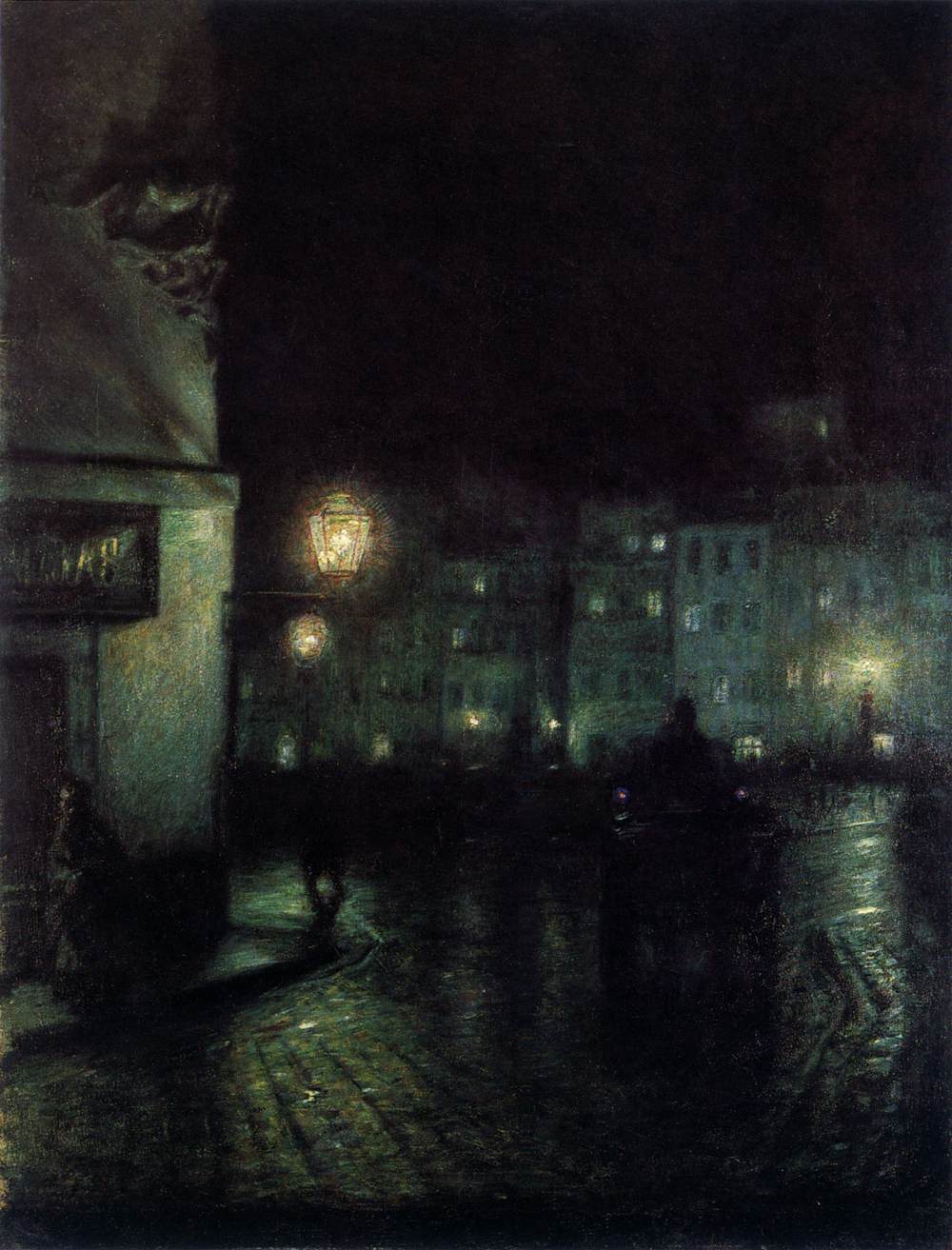Polish painter and graphic artist; one of the first Impressionists and Symbolists in Polish art at the turn of the 19th and 20th centuries; initiator of the Colourist movement in Polish painting of the 1920s and 30s.
He studied (1884-85) at the Warsaw Drawing School under Wojciech Gerson (1831-1901) and Aleksander Kamiński (1823-1886). In 1885 he went to St Petersburg with his friend Władysław Podkowiński and continued his studies (1885-86) at the Academy of Fine Arts there, deriving most profit from his visits to the great collections of older painting.
His early work, largely realistic records of Warsaw life, such as Fair at the Iron Gate (1888; Poznań, National Museum), was influenced by contact with Aleksander Gierymski (1850-1901). In 1889 Pankiewicz spent nine months in Paris, again with Podkowiński. The work of Claude Monet exhibited at the Galerie Georges Petit prompted Pankiewicz to rework in an Impressionist manner a realistic Paris scene he had painted, Flower Market at the Madeleine in Paris (1890; Poznan, National Museum). When exhibited in Poland such work initiated much heated discussion about Impressionism.
Pankiewicz's purest Impressionist works, such as Landscape around Kazimierz-on-the Vistula (1890; Cracow, National Museum), soon gave way, however, to Symbolist works. From 1892 he painted nocturnal views of Warsaw, such as The Old City Market, Warsaw, at Night (1892; Cracow, National Museum), and melancholy landscapes at dawn and dusk, in restrained and subtle tones of green, grey and brown, for example Park in Duboj (1897; Warsaw, National Museum). Other works from this period were inspired by Pankiewicz's great love for French Symbolist literature, especially the work of Stéphane Mallarmé. The latter's poem on a swan, La Vierge, la vivace et le bel aujourd'hui, led Pankiewicz to produce one of his most beautiful nocturnes, Swans in the Saxon Garden in Warsaw at Night (1894; Warsaw, National Museum). Subsequent Symbolist paintings by Pankiewicz, however, reveal greater dependence on Symbolist work from elsewhere, familiar to him because of frequent journeys through western Europe. The influence of James McNeill Whistler, for example, may be seen in the concern for chromatic harmony in Portrait of a Girl in Red Dress (1897; Kielce, National Museum).
Between 1897 and 1910 he was member of the group Sztuka ("Art"). In 1906-14 and 1919-23 he was professor at the Academy of Arts in Cracow. In 1925-39 he was director of the Paris branch of the Cracow Academy. On the outbreak of the war in 1939 he moved to France.
//
![]()

